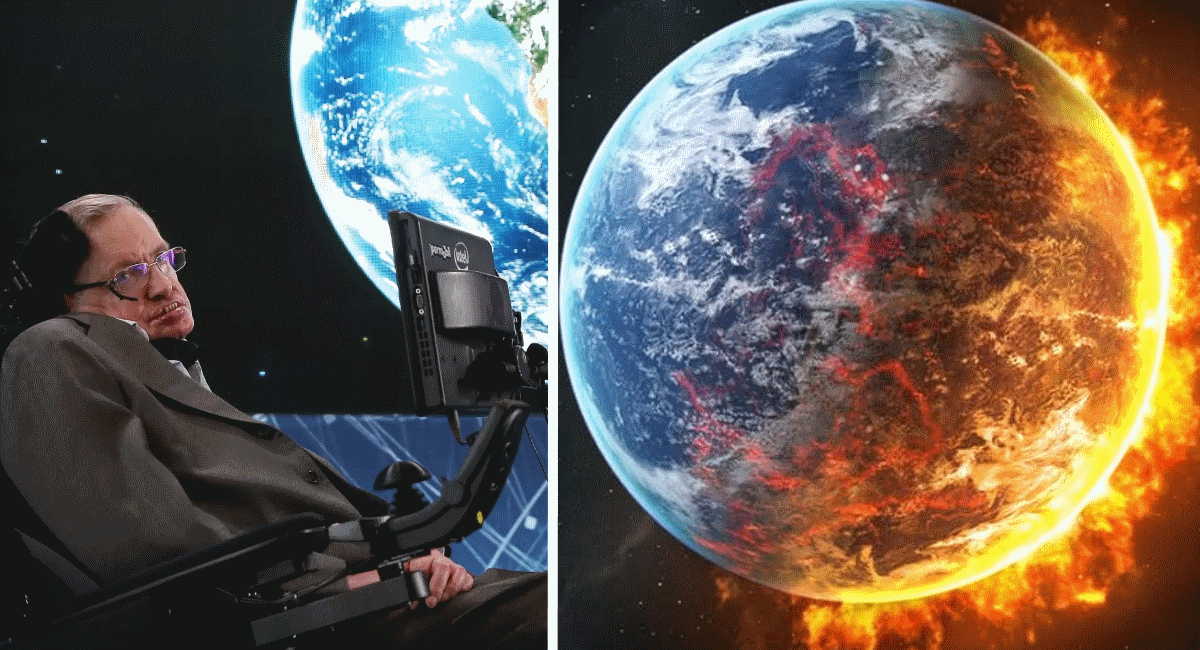Renowned physicist Stephen Hawking spent his lifetime studying the universe — and before his death, he issued a haunting warning about how humanity might face its end. His prediction, once dismissed as distant science fiction, now feels disturbingly close, as global instability, technological leaps, and environmental collapse push us toward the timeline he described with chilling precision.
In one of his final interviews with BBC News, Hawking warned that the human race may only have “about 100 years left” to leave Earth or face extinction. That statement came in 2017, meaning we are already a significant chunk into the countdown he outlined. He pointed to a deadly combination of environmental destruction, artificial intelligence, and nuclear conflict as the forces most likely to bring the world to its knees.
“We are at the most dangerous moment in the development of humanity,” Hawking said at the time. “We now have the technology to destroy the planet, but have not yet developed the ability to escape it.” His words reverberated around the world — a grim reminder from one of the greatest scientific minds of our time.
“We are at the most dangerous moment in the development of humanity.” — Stephen Hawking @BBCNews
Hawking’s apocalyptic timeline was rooted in several converging threats. First, he cited climate change as the most immediate danger, warning that rising global temperatures could turn Earth into a “hothouse planet” similar to Venus. He urged world leaders to act swiftly to prevent irreversible damage — a warning echoed in recent reports by the IPCC, which show temperatures continuing to rise at alarming rates.
He also singled out artificial intelligence as a potential “worst event in the history of civilization.” In interviews with CNN, Hawking said that while AI could bring extraordinary progress, it could also “develop a will of its own and redesign itself at an ever-increasing rate,” potentially outpacing human control. “Humans, who are limited by slow biological evolution, couldn’t compete,” he warned. “And would be superseded.”
Since then, the world has seen the rapid acceleration of AI technology, with new systems capable of performing complex human tasks emerging at breakneck speed. What Hawking described as a distant possibility just a few years ago is now unfolding before our eyes, prompting fierce debate among experts about how close we are to a technological point of no return.
“Artificial intelligence could be the best or the worst thing to happen to humanity.” — Stephen Hawking @CNN
Another cornerstone of Hawking’s warning was humanity’s increasing potential for self-destruction. He pointed to the risks of nuclear war, engineered pandemics, and ecological collapse — scenarios that have grown more tangible in recent years. From the war in Ukraine to record-breaking heat waves and the global pandemic, the world seems to be inching closer to the volatile tipping point he described.
In a particularly stark statement reported by The Guardian, Hawking said, “We will either have to leave this fragile planet or face the prospect of extinction.” He believed space colonization was not a luxury but a necessity. His work on black holes and cosmology inspired a generation of scientists to explore ways humanity might survive beyond Earth.
His vision wasn’t just theoretical. He pushed for rapid investment in off-world exploration, including efforts by agencies like NASA and private ventures like SpaceX. Hawking argued that building self-sustaining colonies on other planets — starting with Mars — could be the only way to ensure humanity’s survival in the face of impending disaster.
“We must leave Earth within 100 years if we are to survive as a species.” — Stephen Hawking @guardian
Many of his warnings are now being echoed by scientists and world leaders. The Doomsday Clock, maintained by the Bulletin of the Atomic Scientists, currently stands closer to midnight than at any time since its creation in 1947 — a symbolic indicator of how perilously close humanity may be to catastrophe. Climate disasters, geopolitical instability, and technological risks have all contributed to its alarming setting.
Environmental scientists told The New York Times that Hawking’s environmental forecasts have already begun to manifest. Droughts are intensifying, ice sheets are collapsing, and extreme weather events are becoming the new normal. “He wasn’t wrong,” one climatologist said. “We’re living inside the timeline he warned about.”
But Hawking’s message was not purely fatalistic. In his final years, he also expressed hope that humanity could survive — if it acted boldly. He urged governments to accelerate clean energy transitions, invest in AI safety research, and prioritize space colonization. “We have within our grasp the tools to avoid disaster,” he said in his final public lecture. “But only if we act together and act now.”
“We have the tools to avoid disaster. But only if we act together and act now.” — Stephen Hawking @nytimes
His chilling words resonate even louder today as the world stands at a crossroads. Rapid technological growth, accelerating climate change, and global unrest have created conditions eerily similar to those he warned would lead to the end of the world. Whether humanity heeds those warnings may determine not just the future of civilization — but whether there’s a future at all.
“I am not an optimist or a pessimist,” Hawking once said. “I am a realist. And reality tells us that the clock is ticking.”





